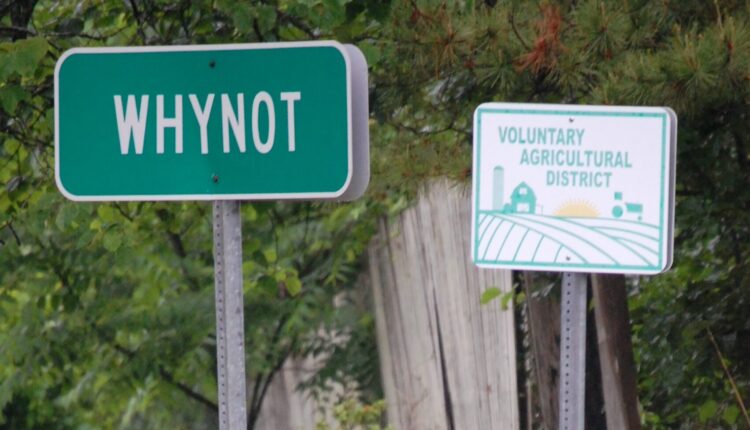
Photo courtesy of Donald Lee Pardue/CC BY 2.0.
From Big Lick to Whynot, we’re crossing North Carolina to learn about its wackiest town names and the stories behind them.
North Carolina has more than 550 municipalities, plus hundreds more unincorporated communities, so among them are sure to be some names that turn heads, raise eyebrows, or inspire guffaws.
Of course, every town has its reason for whatever wacky name has befallen it. Some, however, are lost to time, while others are rather easy explanations (the Outer Banks town of Duck is named for the many ducks and waterfowl in the area, while Bat Cave was named for an actual bat cave in Bluerock Mountain).
We’ve gone looking for North Carolina’s most bizarre town names that deserve some sort of an explanation beyond Occam’s razor. Here are 12 town names and the explanations behind them … or at least the best ones we could dig up.
Bald Head Island
Brunswick County
Accessible by ferry from the nearby town of Southport or by four-wheel-drive vehicle along the beach strand from Fort Fisher to the north, Bald Head Island wasn’t named for a lack of locks among its residents.
Though bald eagles are among the 260 bird species that have been documented on the island, those aren’t the namesake, either. It’s actually believed that early sailors gave the island its name because the headland on the southwest point of the island was worn bald of all vegetation, making it stand out in contrast to the forest behind it and serving as a reference point for ships entering the river. The lighthouse on the island is nicknamed Old Baldy, and though it was decommissioned in 1903, it remains the oldest standing lighthouse in the state.
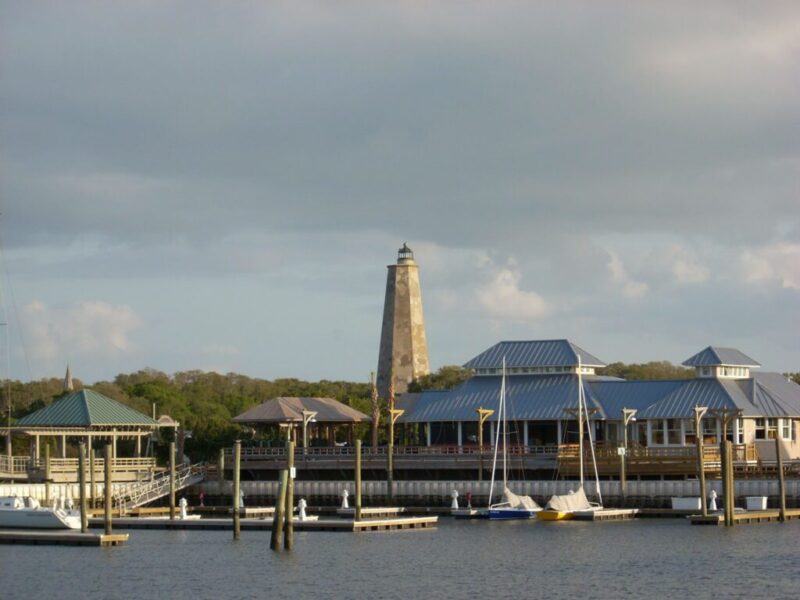
Photo courtesy of KudzuVine.
Barbecue Township
Harnett County
One of 13 townships in Harnett County, around 30 miles north of Fayetteville, there are plenty of good barbecue spots surrounding this 60-square-mile town, but they didn’t get their name from their eastern NC pulled pork — at least not in the way you’d think.
The name was more of an aesthetic inspiration. It’s believed that an early settler named “Red” McNeill saw steam rising from a nearby creek and was reminded of the meat cooking he had seen in the Caribbean. He named the creek such, and the name eventually stuck like sauce to the town the creek was in.
Big Lick
Stanly County
We’ll admit, this one has an easy explanation, but how could we not include a town (or unincorporated community) called Big Lick?
Back in the days before refrigeration and other more refined food preservation methods, salt ruled all. It was during that time that settlers noticed multiple deer trails all leading to a spot where the deer would fervently lick the ground. Those settlers eventually uncovered a number of salt licks in the area, including The Big Lick. A post office was built there in 1860 and the town was founded later that year.
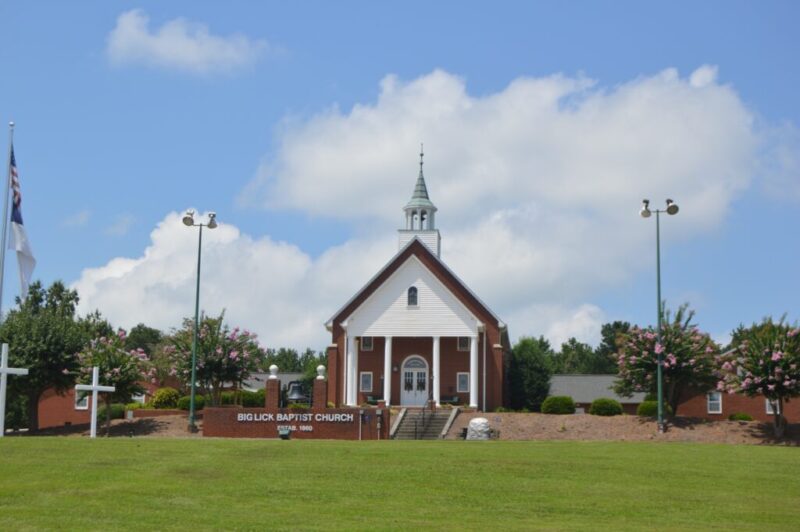
Photo courtesy of Nyttend.
Black Ankle
Montgomery County
Black Ankle’s claim to fame came in 1973 when it was featured on an episode of Hee Haw. At the time, the town had a population of 132. But how did it get its name?
The origin of Black Ankle came following the discovery of gold near Franklin Mountain in 1928, which brought prospectors from all around. The soil in the area is dark, rich, and fertile, and when miners would come off a hard day’s work, they’d often catch rides into one of the nearby towns. The miners were almost always shoeless when they went into town, and the black dirt from the area, mixed with a little water, made their feet discolored and dark. Everywhere the miners went, people would be able to pick them out, saying, “Here come the black-anklers.”
Conetoe
Edgecombe County
Every state has one—that town with a pronunciation that totally defies everything you think you know about pronunciation. This serves as a trap for tourists, letting everyone else know they’re not from ‘round here. Conetoe is that town in North Carolina.
No, the name has nothing to do with cones or toes. Originally known as Warren Station, the town settled on the name Conetoe for its location along Conetoe Creek, an Indigenous name that is actually pronounced “kuh-NEE-tuh.” Now you know, so you won’t look like an out-of-towner.
Faith
Rowan County
With our location on the eastern end of the Bible Belt, it wouldn’t be a stretch to believe that a town would be named Faith for its many churches or because its founder was an evangelist. That’s not totally true, though the town was named on an act of faith.
Local tradition says the town was named based on a comment by newspaper writer John Thomas Wyatt, who settled on a rocky plot of land and opened a quarry south of what is now Salisbury. With no experience in the field, he said he was building his quarry squarely on faith.
Horneytown
Forsyth County
We’ll try our hardest not to make any Big Lick jokes about Horneytown, the unincorporated community located between Winston-Salem and Greensboro. The town was named for the Horney family of settlers who established an agricultural community in the antebellum period. Not a compelling explanation, but it’s just so fun to say.
Kill Devil Hills
Dare County
Kill Devil Hills was home to one of the most historic events in North Carolina’s history. On December 17, 1903, Wilbur and Orville Wright made four flights at the base of the big hill that is now a part of the Wright Brothers National Monument. But why the dark name?
There are a few legends about how the town got its name, and the most common one involves rumrunners. As folklore has it, ships transporting rum from the tropics to markets in the north would wreck along the Outer Banks coast. Their cargo would wash up onto the sand hills, where it would sit until found by the local population, who would spread the word that the rum was strong enough “to kill the devil.”
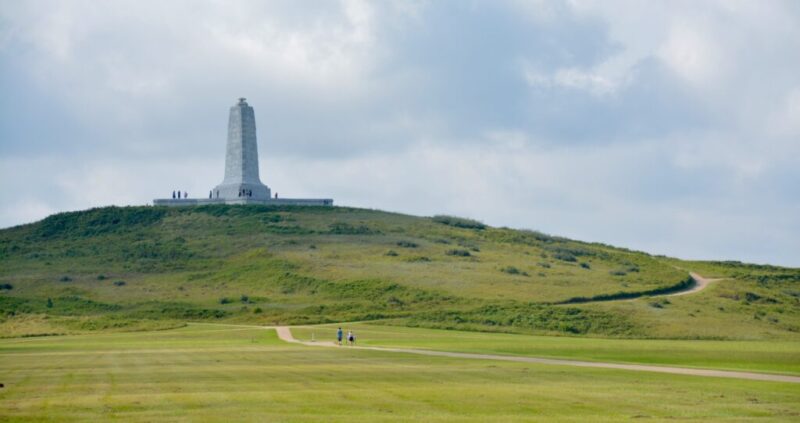
Photo courtesy of Yuming Huang/CC BY-SA 4.0.
Lizard Lick
Wake County
The explanation behind the name for this unincorporated community east of Raleigh isn’t quite as straightforward as The Big Lick, but it has cultivated some fame for the 1,300 residents. According to NC historian William Powell, the town got its name from a “passing observer who saw many lizards sunning and licking themselves on a rail fence.”
That observer could never have imagined what a Nintendo might look like, nevermind the fact that the town would make headlines in 1998 when the company released its new video game Yoshi’s Story. Because Yoshi is a lizard (dinosaur, close enough) who can snatch things up with his long tongue, Nintendo gave Lizard Lick residents first dibs on the anticipated game. The game’s launch in Lizard Lick was the largest event ever covered by the news media for a Nintendo product, bringing national and international news media to the tiny town.
Locust
Stanly and Cabarrus counties
Our first community that crosses county borders, this Charlotte suburb was established in 1860, originally as Crossroads. Nine years later, when they qualified for a post office, the townspeople decided to change their name.
During the deliberation, a local named Maggie Howell saw the luscious locust tree beside the rice fields outside the window and suggested the name Locust Level. Since then, it became the name of the community and became Locust when the town decided to remove the word Level in 1894. Since then, residents have been lucky to avoid any arthropodic plagues.
Love Valley
Iredell County
Love Valley is an authentic western town situated in the foothills of the Brushy Mountains north of Statesville. At the age of 29, Andy Barker left his lucrative general contracting business in Charlotte to pursue his dream of building something straight out of the Wild Wild West, moving his family to his new land in April 1954.
One might think he’d name the town Deadwood or Tombstone, but he went with Love Valley. The explanation is simple enough, according to what his wife told Southern Cultures in 2017: “He said, ‘I’m gonna name this town Love Valley because I love people.’ And that’s exactly what we did.”
Whynot
Randolph County
The unincorporated community of Whynot is located on NC 705, also known as the North Carolina Pottery Highway, as seven miles down the road is Jugtown Pottery, a historic pottery shop listed on the National Register of Historic Places.
While one would think that such a place would inspire creativity, that wasn’t the case for the folks who named Whynot. German and English people first settled the area in the 18th century, and the town name came from residents who were sick of trying to think of a town name. “Why not name the town Why Not and let’s go home?” asked one resident, who was apparently met with approving nods.
This article first appeared on Good Info News Wire and is republished here under a Creative Commons license.
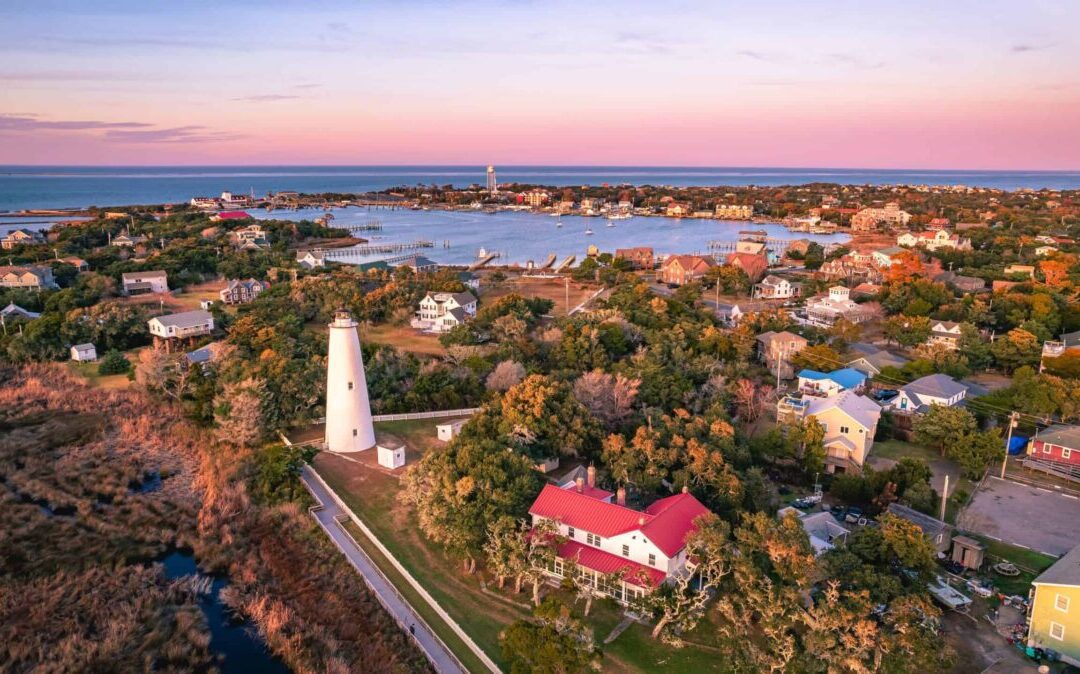
Why one North Carolina island speaks a centuries-old English dialect
On NC’s Ocracoke Island, a unique form of English called "Hoi Toider" is still spoken. Discover the history of this ancient dialect and its...

Cue Paula Cole: The “Dawson’s Creek” house in North Carolina can finally be yours
The "Dawson's Creek" house in Wilmington, North Carolina is up for sale for the first time. Here are all the details. “Dawson’s Creek” was one of...

The biggest celebrities who vacation in North Carolina
From actors and rock stars to presidents and British royalty, discover the biggest celebrities who have visited North Carolina on vacation. With...

The biggest celebrities who vacation in North Carolina
From actors and rock stars to presidents and British royalty, discover the biggest celebrities who have visited North Carolina on vacation. With...
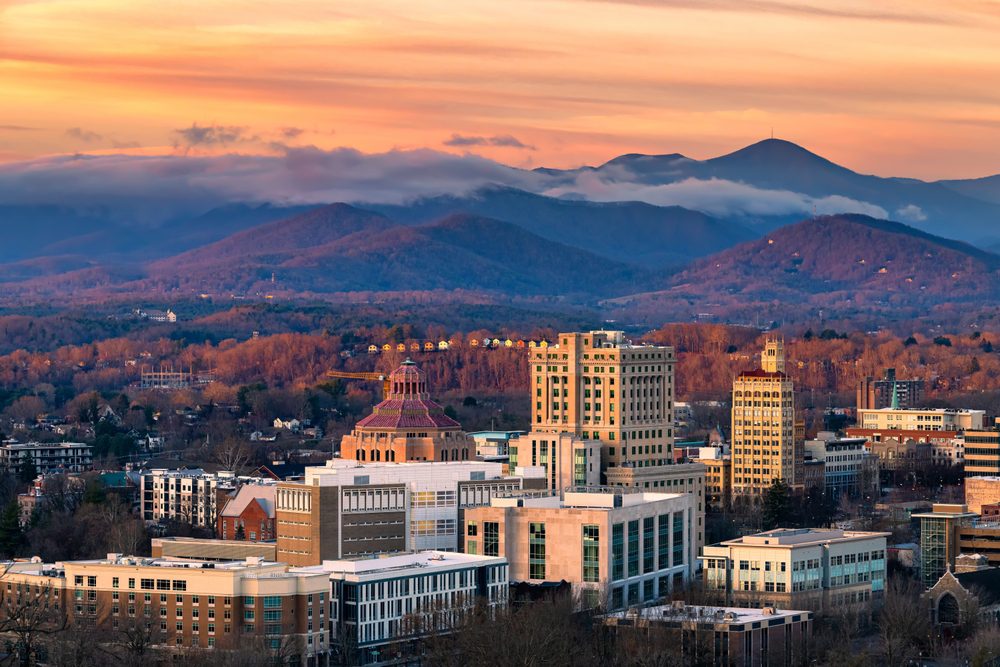
Despite Helene, Readers Digest named this North Carolina city the ‘Nicest Place in America’
Helene hit Asheville especially hard last year, but a new list from Readers Digest named the western NC city the "nicest place in America." One year...







